The ACT program provides expertise to DSHS agencies to ensure clients with a hearing loss are provided with communication strategies and accessibility needs. The ACT program serves as a liaison for the hard of hearing community and provides technical assistance to the Department of Social and Health Services (DSHS) and other State agencies to ensure that individuals with a hearing loss have equal access opportunities to government programs, services and activities. The ACT program provides appropriate auxiliary aids to promote effective communication.
In Washington State there are more than 600,000 people that have a hearing loss; this includes individuals who are late deafened, senior citizens, State employees and veterans. Some of these people may not be aware of the available technology that can assist them in hearing better in meetings, discussions or events.
The Washington State Office of the Deaf and Hard of Hearing (ODHH) loans ACT equipment to various State agencies, and community organizations as needed to ensure communication access for clients and community members with hearing loss.
If you or your clients have a hearing aid or a cochlear implant with a telecoil switch programmed on, the equipment below will help amplify the verbal communication and ensure you have a comfortable communication with whomever you’re speaking with.
ACT Equipment Available:
ACT equipment is also known as Assistive Listening Systems (ALS) which creates a direct, wireless connection between a source of sound and one or more listeners. This eliminates the effects of distance between the source of sound and the listener; such as background noise and reverberation (poor acoustics). By using ACT equipment, you should be able to hear as clearly as if you were standing right next to the source of the sound, even if you are actually sitting in the back of a large and noisy room.
The devices transmit sound directly to the listener's hearing aid or cochlear implant telecoil sound processor. However, some types of ACT equipment can be used even if the listener does not have a compatible hearing aid or cochlear implant. Listener would need to have a mild to mid-range hearing loss to be able to listen using a receiver with headphones.
Portable Loop Systems
The Williams Sound AV LA-90 Portable Loop is a self-contained, one-on-one induction loop assistive listening system compatible with all telecoil based hearing aids, cochlear implants and induction loop receivers. It is ideal for 1:1 applications such as customer service counters, information booths, meetings, vehicles and personal use. The lightweight unit includes a built-in amplifier, external microphone and induction aerial loop within the housing.
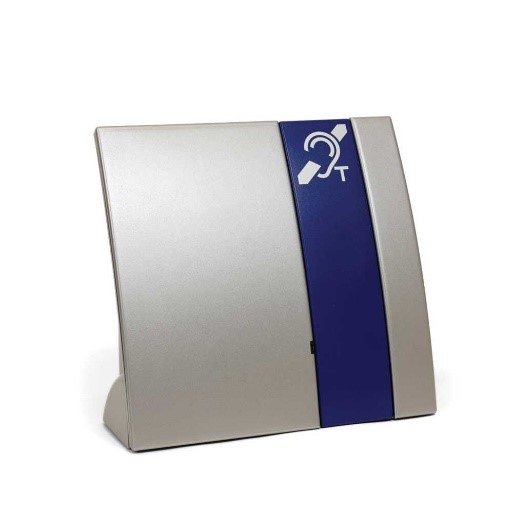
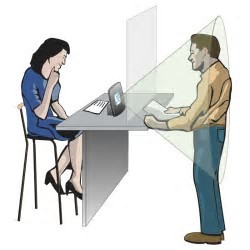
Counter Loops
Counter Loop systems provides assistance for clear communication with hearing aid or cochlear implant users where high background noise is a problem or clear speech is restricted, particularly at counters, booths, desks and similar locations.
Both the under counter and over counter systems can be installed into many positions. The under counter option has a flexible aerial that can be bent to shape and the over counter option features an aerial built into a low profile sign.
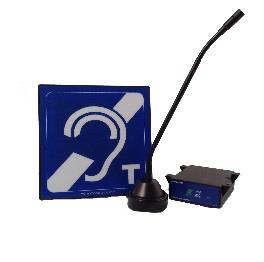
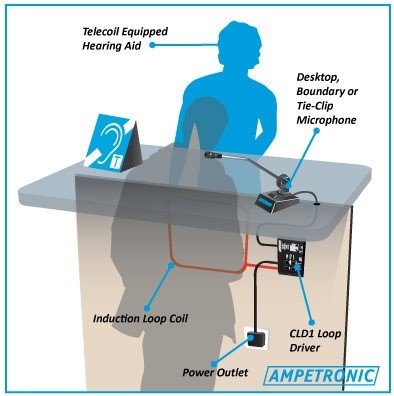
FM Receiver/Transmitter Kits
This is an FM kit with up to 10 receivers, a transmitter and a microphone. This is good for small meetings and 1:1 discussions. These kits are compatible with hearing aids and cochlear implants that have the telecoil switch programmed on. The receivers can also be used with earbuds or headphones for people who do not have hearing aids with a telecoil switch and have a mild to mid-range hearing loss. The challenge for people without hearing aids is that the earphone connected to receivers may not amplify the sound enough to hear as well as a person with hearing aids with a t-coil switch or cochlear implants. Everyone has a different hearing loss so it depends on the person and his/her hearing loss. ODHH has two of these type of kits that are available to borrowed for employees or clients who have a hearing loss. We encourage you to use them as needed but they are subject to availability.
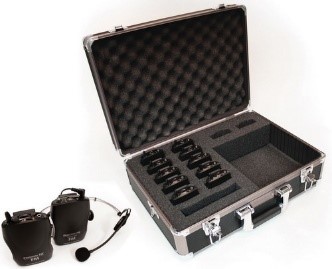
Personal PA systems
Personal PA systems are good for 1:1 conversations between two (2) individuals. For example, this would be ideal for senior citizens who may or may not have a hearing aid or cochlear implant to have a 1:1 discussion with their case managers. This kit includes a receiver, a transmitter, microphone and earphones or headphones. Some of these kits have been given to Home Community Services & Residential Care Services staff who work with the Home Community Services and Residential care clients. ODHH seeks feedback of the effectiveness of the ACT loaner equipment to help determine if these products are being successfully used with clients and if the clients are satisfied with the ability to hear better during their 1:1 discussions.
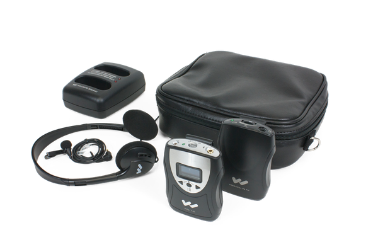
How and Where to Borrow Assistive Communication Technology
ODHH has ACT equipment available for loan to State and local government agencies for the purpose of providing access for Washington residents with hearing loss. ODHH oversees the inventory of ACT equipment at the ALTSA headquarters in Lacey. ODHH also provides consultation to state and local government agencies to assist them in choosing the equipment that best meets their needs and the needs of the individual(s) with hearing loss.
Government agencies, community organizations, and non-profit may contact ODHH directly to borrow Assistive Communication Technology.
If you have questions or concerns, please contact Michael Fox at email: michael.fox1@dshs.wa.gov or 360-799-5796 VP or text at 564-200-2932.
For more information, you can read the ACT FAQ.
Visibility of Loop Systems at Receptionist Desks

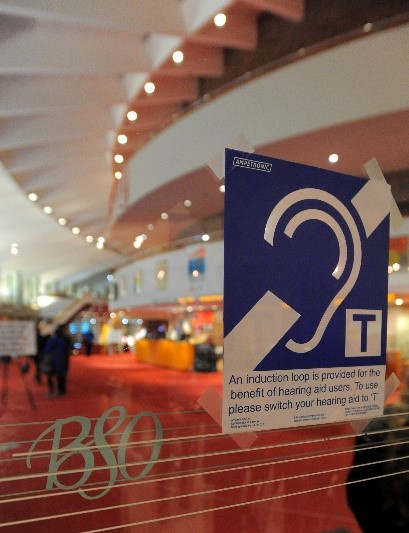
This signage should always be visible at the receptionist desk and should be installed vertically on the window or on a stand so people with a hearing loss can see that the loop system is available at the counter. The hearing loop signage should not be installed flat on the counter because it’s difficult to see from a distance, hence the encouragement to ensure that the signage is always visible to clients and employees. See above pictures to indicate how the Hearing Loop signage should be posted.
